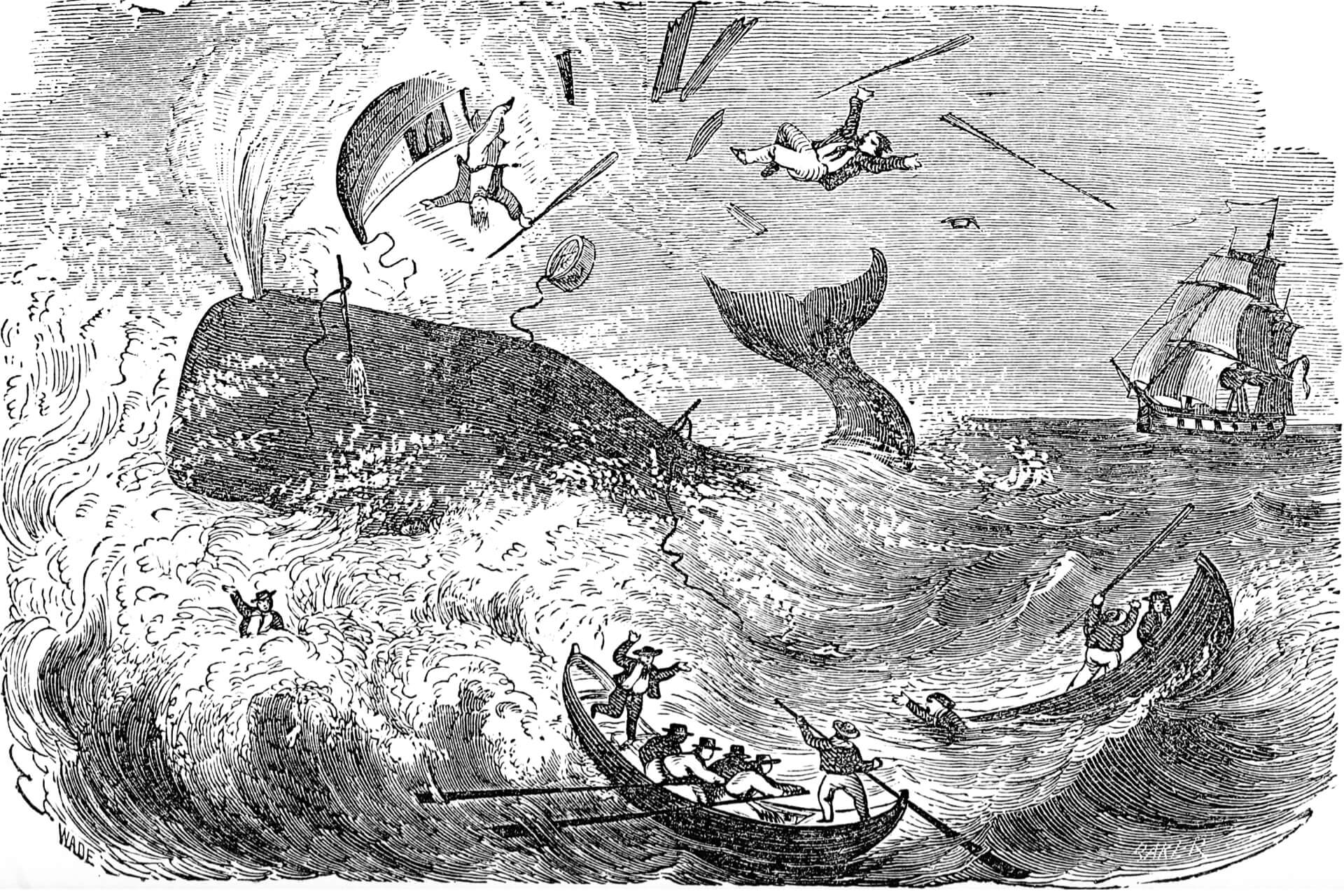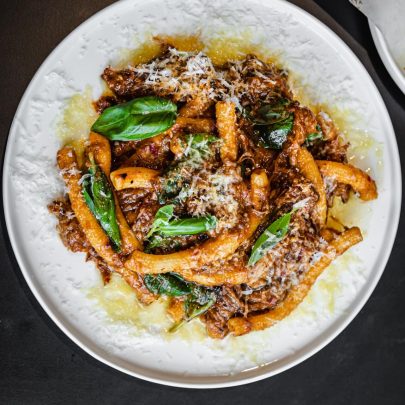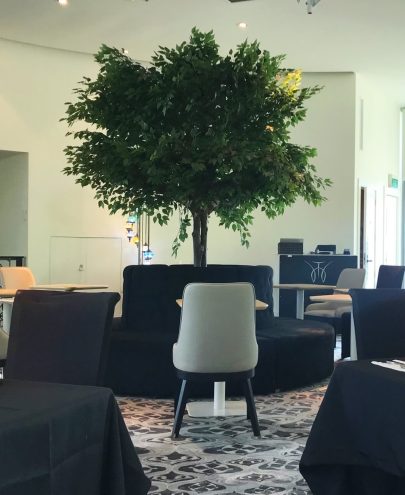Jun 8, 2023 Food
In the 15th chapter of Herman Melville’s Moby-Dick, a strange union takes place in the dining hall of a Nantucket inn called the Try Pots. Ishmael, Melville’s all-American reject, joins Queequeg, a Pacific prince modelled on the Ngāti Toa rangatira Te Pēhi Kupe (whom Melville had read about in George Lillie Craik’s The New Zealanders). Together, they feast on bowl after bowl of chowder — which Melville describes with relish:
It was made of small juicy clams, scarcely bigger than hazel nuts, mixed with pounded ship biscuit, and salted pork cut up into little flakes; the whole enriched with butter, and plentifully seasoned with pepper and salt.
Since its first publication, Moby-Dick has attracted criticism from some peculiar sources (including amateur psychiatrists, bored college students and countless cartoonists); my favourite is from a recipe book, Richard James Hooker’s The Book of Chowder (1978), and concerns this very passage. “Nantucket Island”, says Hooker,
had the simplest chowders, for here, crackers, potatoes, milk, and tomatoes were all omitted. The fish, or clams, were joined with pork, onions, salt, and pepper, and thickened with flour and water… When Herman Melville had Ishmael and Queequeg enjoy a clam chowder that contained pounded ship biscuits at the Try Pots Inn in Nantucket, he was either in error or reporting an aberration in that fishiest of all places.
It’s a wonderful bit of nitpicking, but it does overlook the obvious possibility: that Melville was simply exercising poetic licence. Could his ‘error’ reveal some deeper truth about chowder? And if so, what?
I grew up in South Wales, where I rarely experienced seafood in any form other than battered cod. Anything fishier than a fish finger was treated with extreme suspicion (it wasn’t until I was 12 that I learnt that fish don’t have fingers). And anything combining sea-beast and land-beast was tantamount to blasphemy. In a 2010 episode of his Feasts, Heston Blumenthal committed culinary sacrilege by baking a ‘maremaid pye’ containing both an eel and a suckling pig (perhaps to amplify a general sense of backwardness, the episode insisted that the recipe was medieval — it was actually from Robert May’s 1660 book The Accomplisht Cook). Just in case we thought that some food renaissance was under way in Britain, the pie was repeatedly called “monstrous” and likened to the creature in Mary Shelley’s Frankenstein. The message was unambiguous: surf ’n’ turf belongs on Fear Factor.
On moving to Aotearoa, I came to know chowder via chip shops, food trucks and those nautical-themed novelty restaurants with piratical service and rumbustificating names like Scurvy-Dogs and Scallywags. It was foremost comfort food: cheap, unfussy and filling. But there was also something discomforting about chowder — something vaguely eerie in its being, like Louisiana gumbo and Sarawak laksa, a liminal dish: neither liquid nor solid but unctuous; neither transparent nor opaque but cloudy; neither aquatic nor terrestrial but (as Robert May might have put it) ‘maremaid’.
This is why I love chowder (and why I still find myself at those novelty restaurants). And it’s also, I suspect, why Melville had Ishmael and Queequeg share so much of it at the Try Pots. Chowder defies our usual categories: it represents a fusing of things that are ordinarily separate. And the more diverse or unlikely the ingredients, the greater its ability to unite the different peoples who feast on it.
Herman Melville never made it to Aotearoa, so he never got to taste the chowders here. He would have, but he literally missed the boat — failing to board the Nimrod out of Nuku Hiva in 1842 (a failure with untold consequences for our national literature, but whose sole commemoration seems to consist of a Xerox-printed note pinned to a corkboard at the Butler Point Whaling Museum in Mangonui). In 1857, however, the sailor and memoirist William Whitecar Jr did make it out — via the New Bedford whaler the Barque Pacific. In Four Years Aboard the Whaleship, Whitecar describes a communal feast prepared at Piopiotahi:
We provided ourselves from our ship with potatoes, biscuit, a piece of salt pork, and a saucepan filled with molasses. We soon had a rousing fire going; and the Mauriis [sic] were immediately on the qui vive for the collecting of mutton-fish [i.e. pāua], warreners, and limpets, which they quickly detected…
One of our party volunteering to act as cook, after sufficient of these fish were procured and deprived of their shells, contrived to make us an excellent dinner — we doing justice to a chowder prepared from these creatures…
As culinary historian, Whitecar’s reliability is severely compromised by his eagerness to see the fiction of the ‘noble savage’ in the actual world around him. Even so, the passage is interesting — not least because it contains the possibility, however obscured, however neglected, of a properly bicultural cuisine: a harmonious mingling of the culinary traditions of tangata whenua and tangata tiriti.
As in Moby-Dick, the key to this mingling lies in the diversity of the ingredients. Molasses is, to say the least, unorthodox: in The Book of Chowder (which features a whopping 73 chowders), molasses appears only in a Shaker bean chowder from the 1890s (incidentally, the Shakers, or ‘Shaking Quakers’, were big on chowder: The Book of Chowder also contains a Shaker corn chowder and a Shaker perch chowder). Limpets, meanwhile, are virtually unmentioned in most of Western culinary history except as famine food. For as long as chowder has been made in Aotearoa, then, it’s looked very different from the chowders made elsewhere — a local variant born of both necessity and plenty.
Thankfully, the practice of putting weird stuff into chowder is still going strong in Tāmaki Makaurau. Here are five:
1.
On his website, Simon Gault features a recipe for an Indian mussel chowder flavoured with ‘Indian seasoning’ (this, I think, is now the preferred term for The Spice Blend Formerly Known as Curry Powder — a change made after the overdue recognition that curry powder doesn’t actually exist in any Indian cuisine). Gault’s chowder also includes Tio Pepe — which is certainly a welcome addition, though I must admit that whenever I use it, I cannot help but think of Melville’s taunting words: “Thou belongest to that hopeless, sallow tribe which no wine of this world will ever warm; and for whom even Pale Sherry would be too rosy-strong.”
2.
Snö Café in Remuera serves a chowder which includes spring onions and chilli oil — nods, I take it, to the essential similarity between New England chowder and tonkotsu ramen.
G01/12 Saint Marks Rd, Remuera
3.
On Waiheke, Charlie Farley’s top their chowder with chilli-lime-salt crisps. Both potatoes and crackers are typical in chowder. Potatoes are usually diced up and mixed throughout, or else they are sliced (or occasionally mashed) and layered within the chowder; crackers, meanwhile, are either ground down for thickening, layered within or placed on top. But potatoes that are so thin and crispy that they replace the crackers on top appear to be unique.
21 The Strand, Onetangi, Waiheke
4.
At The Fed Deli, the chowder comes with pastrami and kūmara. Given that The Fed is, in the words of its website, a “take on an old-school NYC Jewish delicatessen”, the substitution of pastrami for bacon feels perfect. And few things say ‘you are here’ (and not in New England) quite like kūmara.
86 Federal St, central city
5.
The chowder at Chikos in Henderson contains tomatoes (which, except in the northernmost parts of New England, have been common in chowders since about 1830), as well as olives — which are about as rare in chowder as tom yum paste, which also features in the chowder at Chikos.
7/255 Lincoln Rd, Henderson
–






